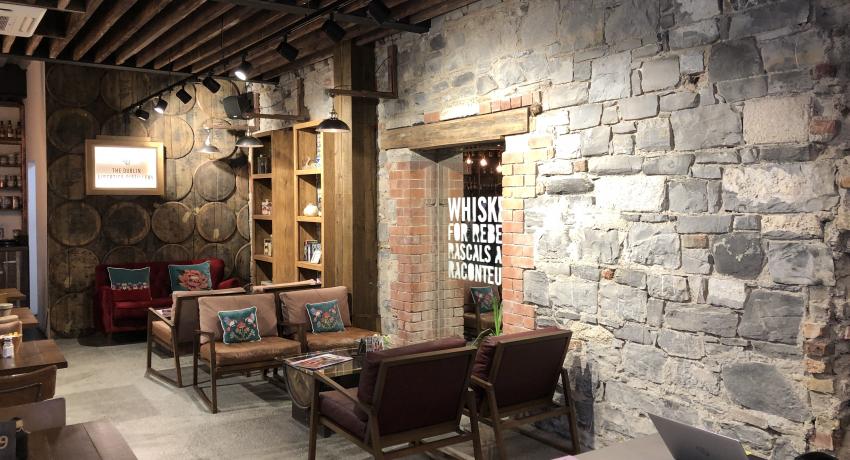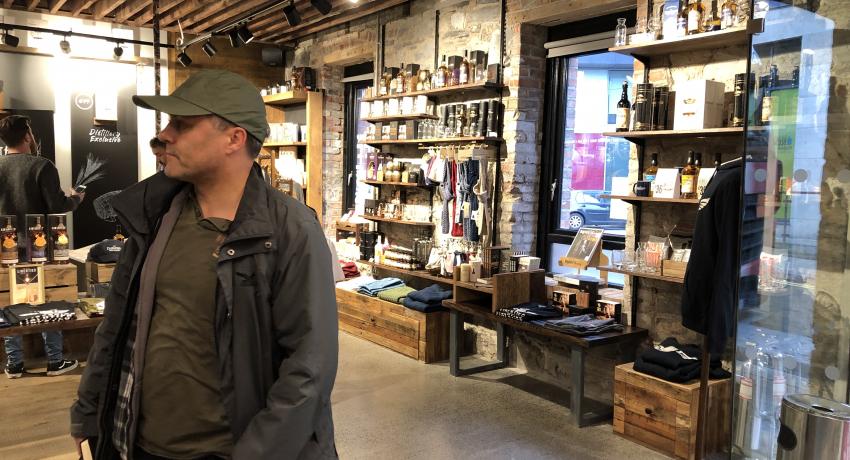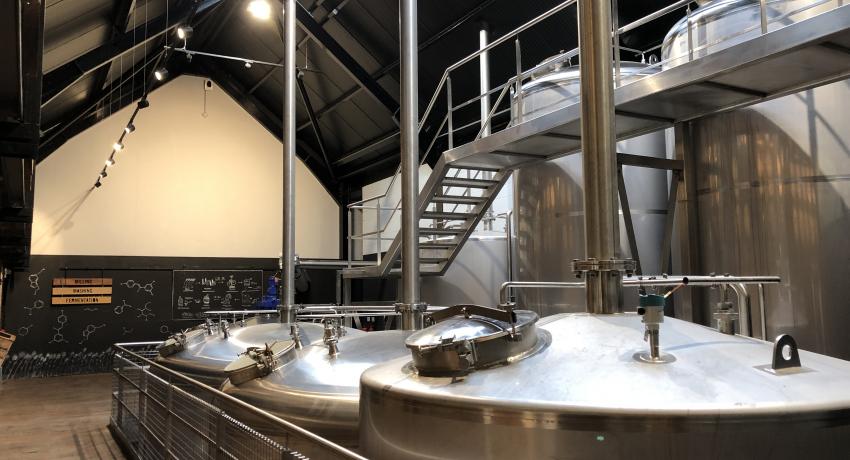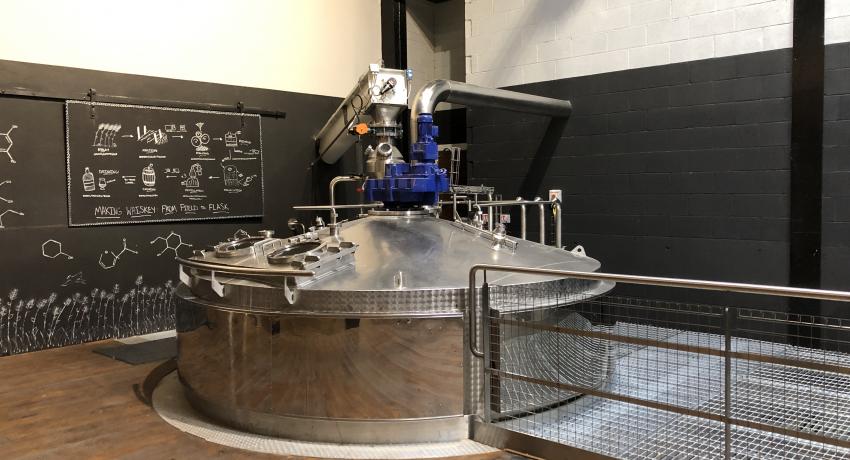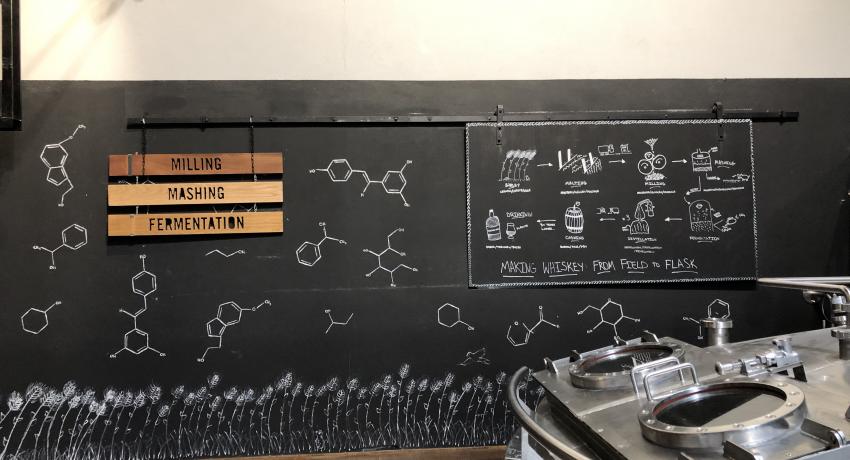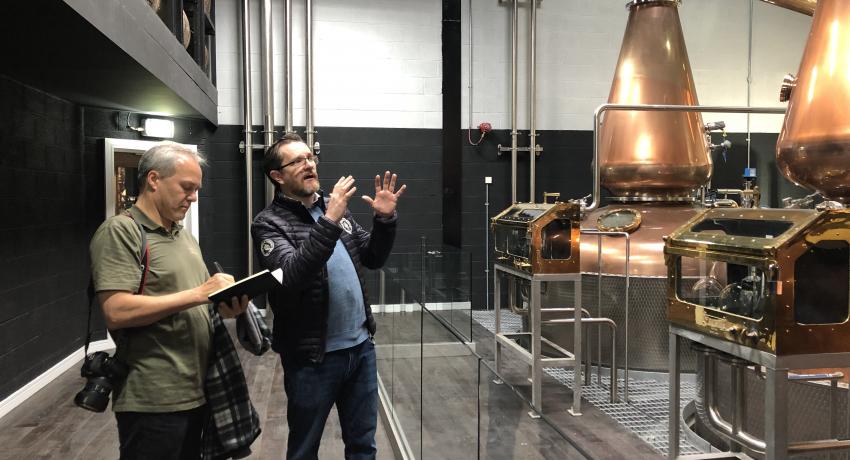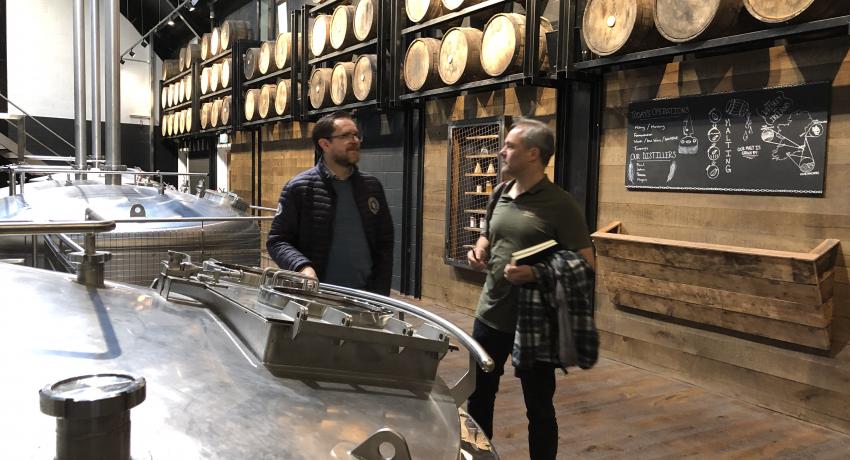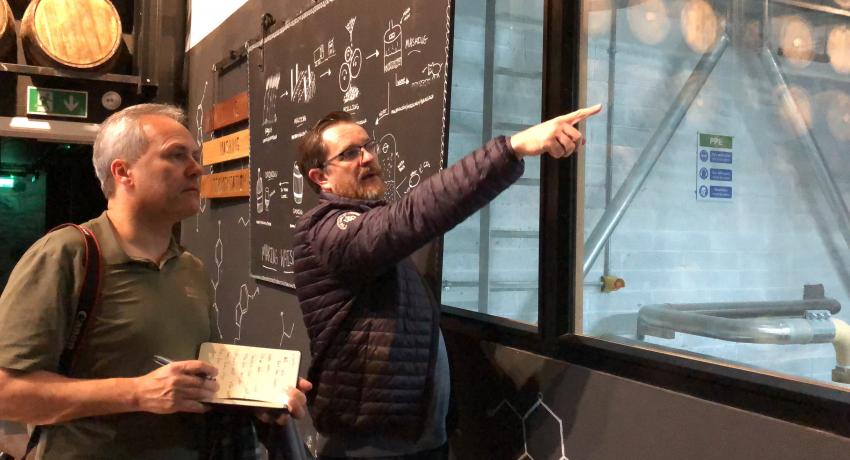The Liberties area of southwest Dublin had once been the centre of distilling in Ireland. A ‘liberty’ was a church-controlled jurisdiction near the city, preserving its own freedom over things like taxes and certain laws – hence the name. Distillers love freedom from taxes, and at one time there were over thirty distilleries here. The area was known as the ‘golden triangle’ of Irish distilling, with residents like Jameson, Power, Roe, not to mention the many breweries. I think there’s one called Guinness still around here somewhere. - Whiskey Burn Chp. 1
The Liberties area of Dublin has once again the highest concentration of working distilleries in Ireland (though that is admittedly not difficult): Pearse Lyons on James Street, Roe & Co. on the same street, Teeling in Newmarket, and round the back, I think actually physically attached, the Dublin Liberties Distillery on Mill Street.
Quintessential Brands
The international drinks company Quintessential Brands (Dead Rabbit, The Irishman, along with gin, liquors, vodka, cognac, etc.) have built their new distillery in the shell of a 400-year-old mill. The building had also been used as a tannery – but the smell given off as you arrive is definitely better now - I used to work in a town in Italy with 200 tanneries, so I should know. I remember arriving for work and being greeted by that smell of rotten eggs, or sulphur, filling the air – ‘welcome to hell’ sort of stuff.
Interestingly, the DLD marketing dept. seem to have taken inspiration from the unholier side of things with names like Oak Devil – named after the wooden statue of his demonic highness that guarded the entrance to the area (abandon hope all ye who enter here..), or Copper Alley – a street renowned for its tradesfolk and artisans by day, taverns and brothels by night, or Murder Lane, in honour of a particularly dodgy part of the area - one for Hallowe’en perhaps, and Keeper’s Coin - named after the crypts beneath Christ Church cathedral - once turned into underground taverns, each cask guarded by a keeper who expected his coins, of course.
On my original Vespa trip for the book, I popped round to Mill Street after visiting Teeling, peeped in through a chink in the wooden door of No.33, and saw what was little more than the shell of the building full of builders’ rubble - so I guessed that production wasn’t going to happen for a little while longer. Today, however, the same wooden door is wide open and the distillery is up and running. I walk in to the superbly done-out visitors’ centre and shop. I’m impressed. This is what 28 million euro of investment can do to a pile of builders’ rubble.
Déjà vu
Visitor Supervisor Robert welcomes me and sends word to the distillery manager, John, who is going to take me round. While I’m waiting, I ask a few questions like, ‘How many visitors do you forecast per year?’ - and they are expecting about 80,000, ‘What’s your best-selling merchandise?’ - the whiskey, of course, and - most importantly perhaps - ‘Will you stock my book?’ (Wow, if they can just sell one to each visitor that will take care of the first few print runs...)
When the manager arrives, we both realise that we have met before. John was the distiller at Connacht Distillery in Co. Mayo when I visited there on my Whiskey Burn, and he has now taken on the job of running the show here, his second distillery set-up project. He should be careful, it could become something of a habit.
John tells me the facts and figures as we go up to the production floor underneath the roof. Barley is sourced from Kilkenny and Cork, and prepared in a 2-tonne mash tun before being sent to the washbacks for a 72-hour fermentation. The three pot stills, of 6 – 10,000 litres, were made by Carl of Germany (who also made the stills for Echlinville distillery), and they had to be winched in by crane in through the roof, which was falling in anyway as far as I remember.
The Distillers
The Liberties master distiller is Darryl McNally, who worked 17 years at Old Bushmills up in the north. It must have been quite a change going from arguably the oldest distillery in the world to the newest. With his team of 2 women distillers and 1 man, Darryl can produce up to 2 million bottles of whiskey a year, though present aims are selling around 50,000 cases p/a. Expansion is unlikely, I wouldn’t know where they would expand to, actually. I don’t think the Teeling brothers next door would take kindly to them knocking a hole in the wall and building an extension.
DLD can either double or triple distil here, depending on how light or heavy a style they intend to produce, and the today the spirit is trickling out of the third still at a hefty 85% ABV - sweet and estery, with a light character of banana esters and tropical fruit. They don’t make pot still whiskey, not at the moment anyway, but then Darryl didn’t make pot still at Bushmills either and they’ve done all right for the past 400 years, haven't they?
View to a still
It is certainly fascinating to see how the architects have used the limited space available on Mill Street to fit everything in – all the production machinery is on the one floor a few paces apart, which makes it easy to understand the process, just in case you weren't listening to the tour guide. Tours are compact too, it’s all there to see at one glance before heading into the distillery bar, which is also open to the public. The advantage of this almost unrivalled level of compactness is that you can sit in the bar, drink your whiskey and watch the still men making it a few yards away through the window.
There's something very satisfying in looking at the stills working away that made the whiskey in the glass in front of you, and not many public bars in the world can boast a view to beat this one. I think I could become a regular.

